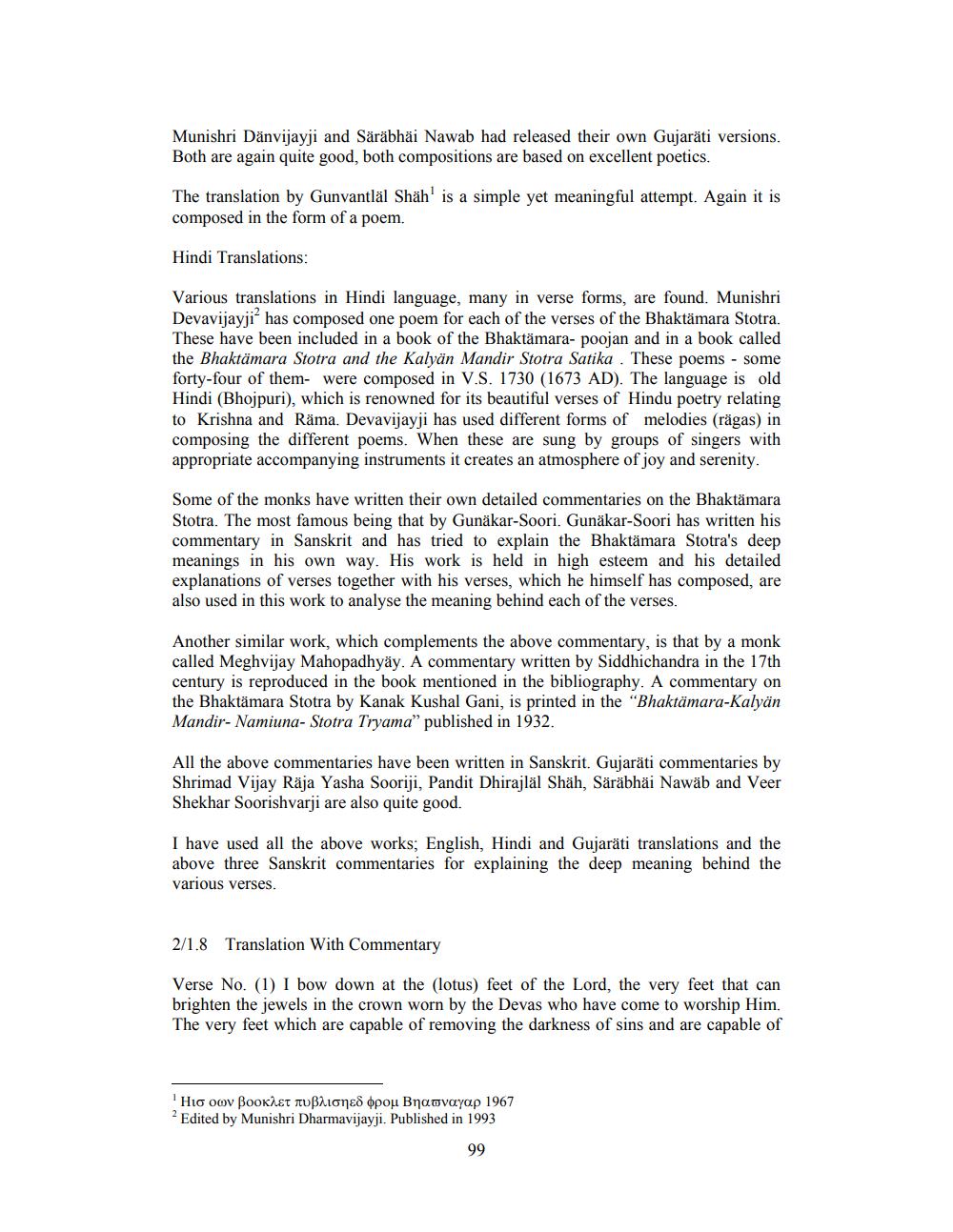________________
Munishri Dänvijayji and Säräbhäi Nawab had released their own Gujaräti versions. Both are again quite good, both compositions are based on excellent poetics.
The translation by Gunvantläl Shah' is a simple yet meaningful attempt. Again it is composed in the form of a poem.
Hindi Translations:
Various translations in Hindi language, many in verse forms, are found. Munishri Devavijayji2 has composed one poem for each of the verses of the Bhaktämara Stotra. These have been included in a book of the Bhaktämara- poojan and in a book called the Bhaktämara Stotra and the Kalyan Mandir Stotra Satika. These poems - some forty-four of them- were composed in V.S. 1730 (1673 AD). The language is old Hindi (Bhojpuri), which is renowned for its beautiful verses of Hindu poetry relating to Krishna and Rama. Devavijayji has used different forms of melodies (rägas) in composing the different poems. When these are sung by groups of singers with appropriate accompanying instruments it creates an atmosphere of joy and serenity.
Some of the monks have written their own detailed commentaries on the Bhaktämara Stotra. The most famous being that by Gunäkar-Soori. Gunäkar-Soori has written his commentary in Sanskrit and has tried to explain the Bhaktämara Stotra's deep meanings in his own way. His work is held in high esteem and his detailed explanations of verses together with his verses, which he himself has composed, are also used in this work to analyse the meaning behind each of the verses.
Another similar work, which complements the above commentary, is that by a monk called Meghvijay Mahopadhyay. A commentary written by Siddhichandra in the 17th century is reproduced in the book mentioned in the bibliography. A commentary on the Bhaktämara Stotra by Kanak Kushal Gani, is printed in the "Bhaktämara-Kalyän Mandir-Namiuna- Stotra Tryama" published in 1932.
All the above commentaries have been written in Sanskrit. Gujaräti commentaries by Shrimad Vijay Raja Yasha Sooriji, Pandit Dhirajläl Shäh, Säräbhäi Nawäb and Veer Shekhar Soorishvarji are also quite good.
I have used all the above works; English, Hindi and Gujaräti translations and the above three Sanskrit commentaries for explaining the deep meaning behind the various verses.
2/1.8 Translation With Commentary
Verse No. (1) I bow down at the (lotus) feet of the Lord, the very feet that can brighten the jewels in the crown worn by the Devas who have come to worship Him. The very feet which are capable of removing the darkness of sins and are capable of
1 Ηισ οων βοοκλετ πυβλισηεδ φρομ Βηαπναγαρ 1967
Edited by Munishri Dharmavijayji. Published in 1993
99




